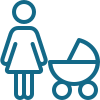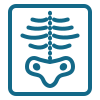Nursing care for Cardiac Catheterization
We are a highly recognized and trustworthy at-home healthcare company that offers a variety of health services delivered to you in the comfort of your own home. So, if you want cardiac catheterization care at home, please contact us on the Medintu portal and an experienced nurse will be at your door as soon as possible. Cardiac catheterization is a sensitive procedure that requires extra attention and care in its aftermath, which is best performed by a medical professional. So, don’t hesitate to call us for great cardiac catheterization treatment at home.

Fill out form to enquire now
What Is Cardiac Catheterization?
Cardiac catheterization is a general term for a number of medical operations that use this technology, including coronary angiography, left ventricle angiography, coronary angioplasty, balloon septostomy, electrophysiological research, and catheter ablation.
Services Offered
Cardiac Catheterization Diagnosis and Use
- Cardiac catheterization is not advised for people who have cardiac issues. The procedure can be used to diagnose the following diseases:
- The Heart Attack
- The onset of inexplicable heart failure due to abnormal stress testing
- Surviving a cardiac arrest
- Arrhythmia of the heart
- Chronic chest pain
- Prinzmetal Angina is suspected.
- Other applications for cardiac catheterization include assessing intracardiac and intravascular blood pressures.
- To collect tissue samples for biopsy
- For injecting various fluids in order to monitor blood flow in the heart
- For detecting intracardiac shunts
- In order to investigate the structure of the heart arteries and chambers, contrast chemicals are injected.
Types Of Cardiac Catheter
- The following are some of the several types of cardiac catheters:
- Cardiac Catheter
- Cardiac Biopsy Catheter
- Angiographic Catheter
- Arterial Catheter
- Central venous catheterization
- Catheter for a column disc
- Catheter with two lumens
- Coronary artery catheter Amplatz
- Catheter for Atherectomy
Cardiac Catheter Care
Proper cardiac catheter care is critical for reducing the risk of infections or internal damage. The following are some general guidelines for cardiac catheter care:
- After a day following the treatment, you can remove the dressing.
- Cover the area with an adhesive bandage once the dressing has been removed.
- It is common for the catheter insertion site to bleed for a number of days.
- There may be some edema at the catheterization site.
- Clean the catheterization site gently with soap and water on a regular basis.
- The use of creams and lotions is not recommended.
- Wear loose, comfortable clothing to avoid disturbing the catheter.
- Soaking in a bathtub
Just Fill Up The Form We'll Take Care Of The Rest!
Services Available in India
FAQs
Which is the most common complication during cardiac catheterization?
Hematoma/Retroperitoneal Bleeding.
These are some of the most common problems encountered following cardiac catheterization operations. Hematomas are typically developed due to poorly regulated hemostasis following sheath removal.
Can a heart cath cause a stroke?
Stroke resulting from cardiac catheterization is relatively common due to the high volume of cardiac procedures performed worldwide. This article will go over periprocedural stroke during cardiac catheterization, including diagnostic and interventional techniques.
Is AFIB common after cardiac catheterization?
It is common for patients undergoing cardiac catheterization to have atrial fibrillation (AF)
What happens if a catheter is left in too long?What is the most common site for cardiac catheterization?
Your doctor will insert a tiny, flexible, hollow tube (called a catheter) into a blood vessel in the groin, arm, or neck during cardiac catheterization (also known as cardiac cath). The catheter is then passed into the blood vessel, into the aorta, and into the heart.
How can I schedule nursing care for cardiac - catheterization?
You can make a schedule for nursing care for cardiac catheterization using the medintu online portal or contact us.












